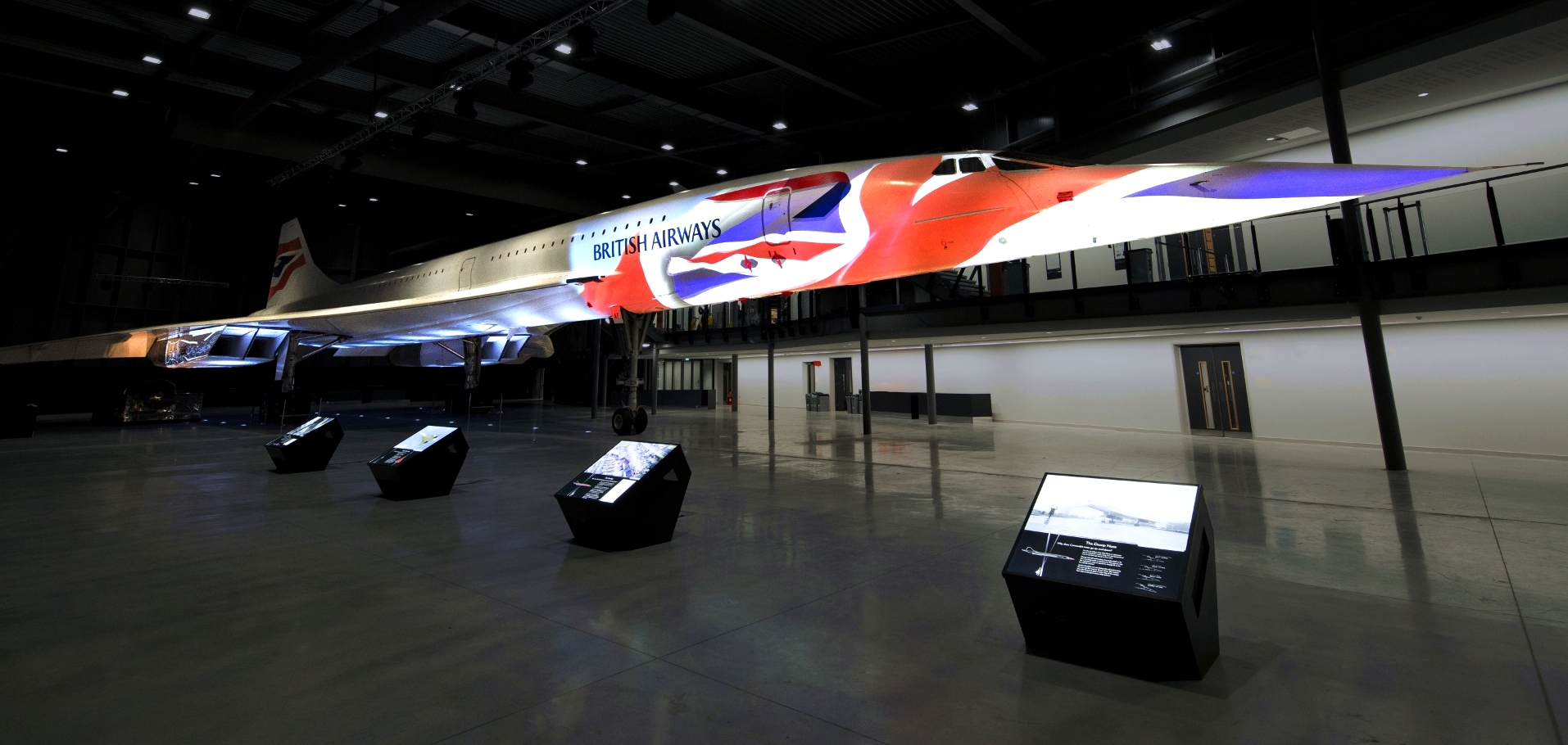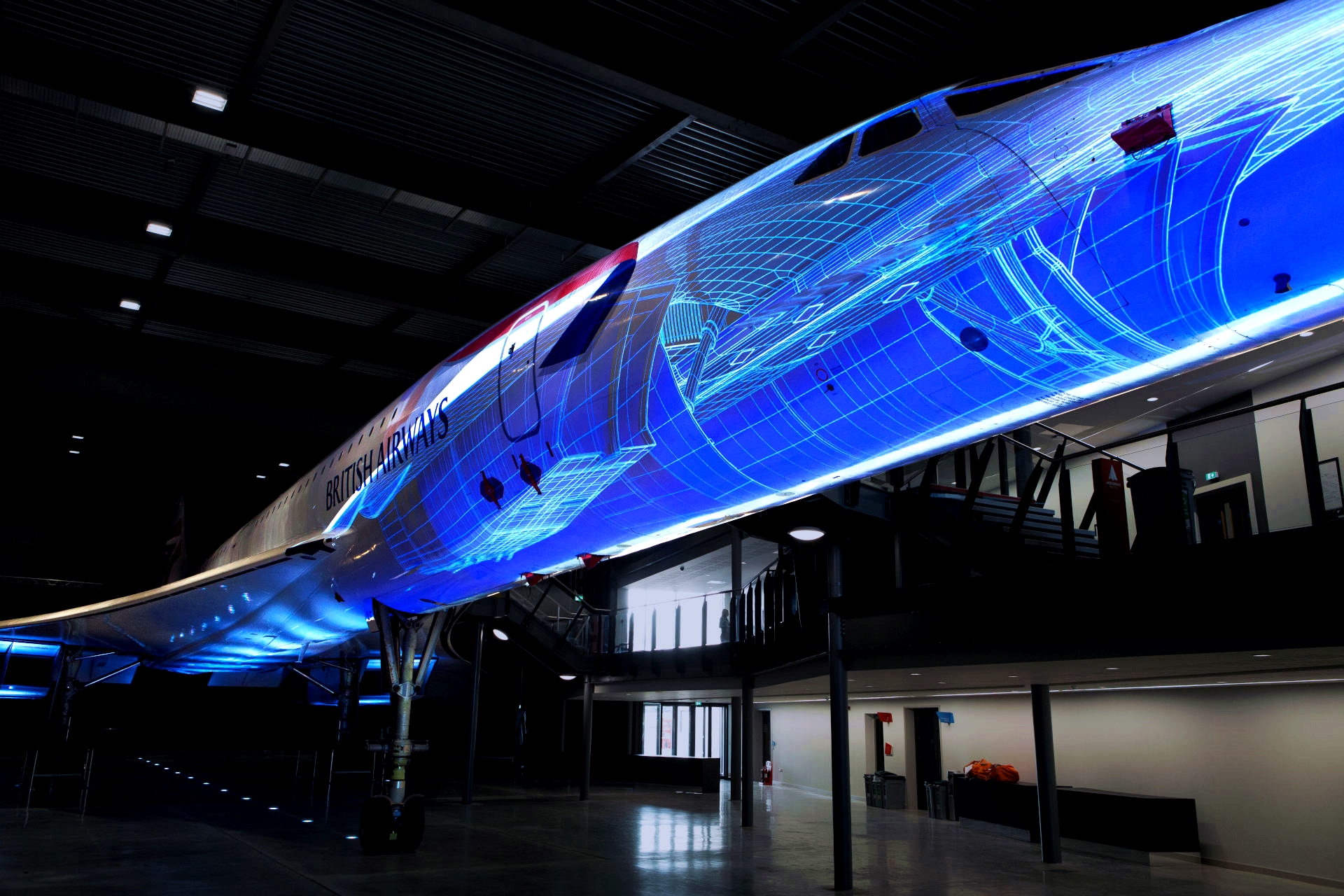
Projection Mapping Used To Tell Concorde’s Story, With The Jet As The Screen
October 29, 2018 by Dave Haynes
Here’s a great example of projection mapping being used to tell a story, with the subject of that story doubling as the digital canvas.
A specially constructed hangar at Aerospace Bristol in England is home to the last Concorde supersonic passenger jet ever built, and the long, lean jet itself is used as the projection surface for a 12-minute media piece about the Concorde program.
“We created three chapters of content for the animation with the first being the making of Concorde,” explains Gavin MacArthur, creative director of Projection Artworks, the London, UK company that put the piece together. “Our aim was to capture the history and challenge of the project and the massive engineering undertaking involved. The second chapter was technical design. The third and final chapter centered on the emotional connection of those involved. From the pilots, engineers, and the people that built them, everyone (involved) has an emotional connection to this project. In this hangar, Concorde is the one standalone plane – it is the hero and our creative is the focus of that.”
Using Alpha Foxtrot – the last Concorde ever built – for the backdrop, Projection Artworks edge-blended the output from four Christie laser projectors.
Says a press release:
Using custom content that fuses iconic footage with exclusive interviews and graphical effects mapped on the right-hand side of the front fuselage, visitors embark on a 12-minute journey through the Concorde’s storied past from its design to the technical intricacies of the engine. Celebrities who flew on the Concorde are part of the visual voyage as are flight paths and x-ray images, while the audio track features commentary from engineers, pilots and stewards who worked aboard the vessel.
Using a laser scanner to take accurate measurements at three million points on the aircraft, Projection Artworks completed 50 scans and created a 3D model. They then combined all the points to form one three-dimensional point cloud, resulting in an accurate model.
“It wasn’t just technical, it was very moving,” says MacArthur. “One thing that was apparent was a lot of people put a considerable amount of time into the Concorde project. It was a beautiful plane, you can’t spoil it by putting bad content onto it, you’ve got to do it justice and make sure the information is technically correct.”
More than 150,000 visitors went through the doors within the first ten months of the attraction opening.
The razzle-dazzle aside, I love how the projection can give viewers a sense of the airframe, right on the plane.




Leave a comment